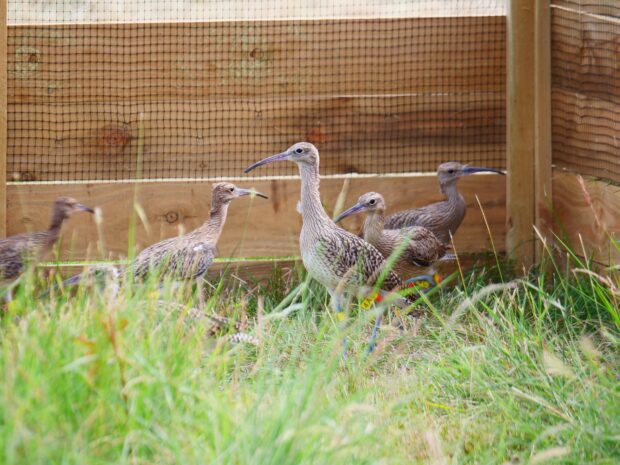
There has been coverage on a Natural England (NE)-led partnership project to boost populations of Eurasian curlew in the Daily Telegraph, BBC Online, Eastern Daily Press, Hello, Daily Express and BBC Radio Norfolk and Times Radio. HRH The Prince of Wales attended the release of a clutch of the rare chicks on the Wild Ken Hill and Sandringham estates, alongside the chair of Natural England, Tony Juniper, yesterday (Tuesday 27th July).
The birds release follow rearing at Pensthorpe Conservation Trust (PCT). The Eurasian curlew, Europe's largest wading bird, is listed as "near-threatened" on the International Union for Conservation of Nature's Red List index, and that the UK is home to around a quarter of its breeding population.
Following a successful trial in 2019, the release is the first year of a new NE project which aims to prevent the licensed destruction of curlew eggs at airfields in the East of England. Previously, where curlew nested too close to runways, eggs were destroyed to prevent bird strike and maintain air safety.
Natural England Chair, Tony Juniper said:
Curlews have suffered significant declines over the past 40 years and their plight now presents one of England’s most pressing conservation challenges. A range of actions will be needed to restore these wonderful birds and we hope that the translocation of curlews at this large scale, a method that has never been tried before, will make a real difference to the population in the east of England.
Today’s release on the Sandringham Estate marks a significant milestone for the recovery of this iconic bird. We’re proud to be leading such an innovative project, which will not only improve the prospects of curlew in Norfolk, but will help inform action to recover curlew across England. It is a fine example of the kinds of partnerships that will be needed to achieve nature recovery more widely and as such we hope will be an inspiration for much more of the same.
The releases aim to expand an existing breeding population of curlew in Breckland, creating a new curlew nature recovery network.
HRH The Prince of Wales said yesterday at Sandringham:
I have always cherished the evocative call of the curlew, but it is now dangerously close to being something that our grandchildren will never have the chance to enjoy.
I am therefore particularly delighted that the Sandringham Estate has been able to assist in a small way the recovery of this wonderful bird.
This initiative would not have been possible without the tireless work of many people and organisations working in partnership towards a common aim. Every curlew nest is something to prize, nurture and protect, and it is utterly vital that we work together to turn this iconic bird’s fortunes around.
Some of the birds have been fitted with GPS or radio tags by the British Trust for Ornithology (BTO), so we can continue to monitor their progress after they are released, gathering information on their dispersal, habitat use and survival.
2 comments
Comment by William Hughes-Games posted on
But have you taken the most significant measure for this and for many many other bird species. Namely improving the habitat. Curlews tend to be beach waders but so many other birds depend on lakes, ponds and streams. The best way of improving such habitats is to re-introduce beavers. Has the Prince of Whales done this on his estate or is he too worried about his willows.
Comment by John W. Baxter posted on
Forty years of nest destruction cannot be brought back.......we can only hope that the next generation is more enlightened and would have removed the curlew eggs and incubated them elsewhere not unlike the whooping crane project which took action instead of destruction and helped bring a species back from the brink. Remember that it was us who drove them to the brink in the first place..........let us not forget that!.